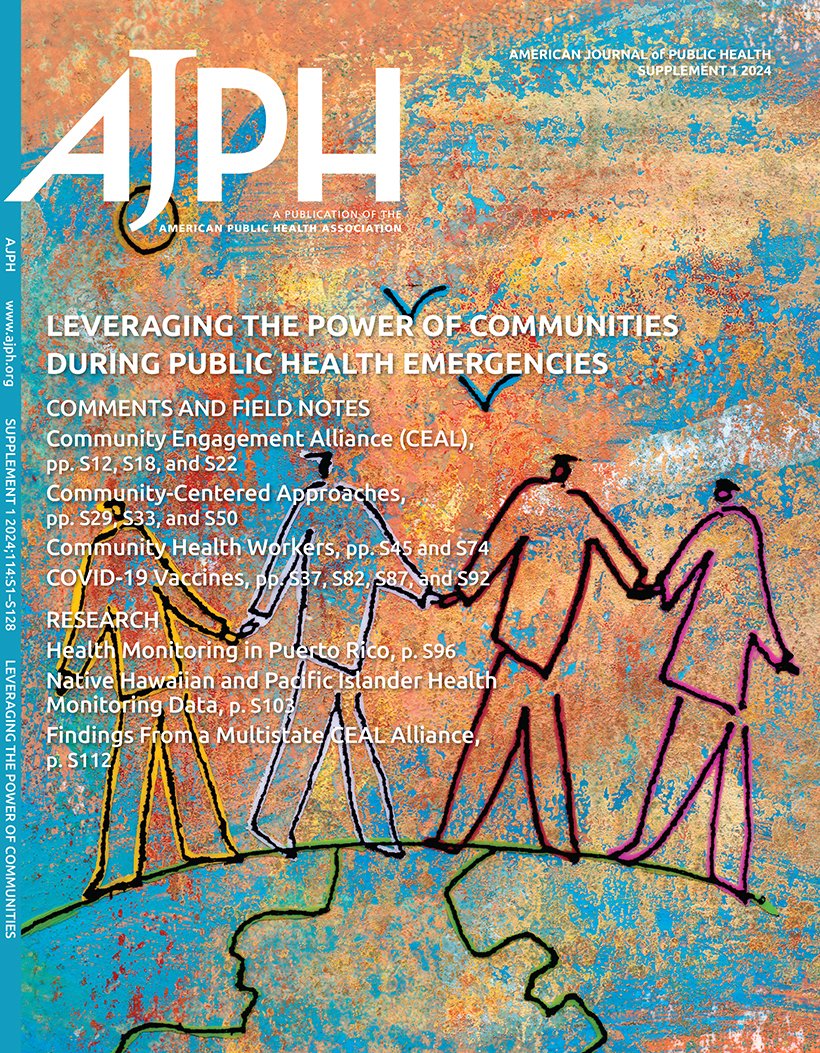Air Pollutants and Breast Cancer Risk: A Parallel Analysis of Five Large US Prospective Cohorts.
IF 9.6
1区 医学
Q1 PUBLIC, ENVIRONMENTAL & OCCUPATIONAL HEALTH
引用次数: 0
Abstract
Objectives. To determine whether outdoor air pollution exposure is associated with breast cancer incidence. Methods. Residential-level concentrations of nitrogen dioxide (NO2, parts per billion [ppb]), fine particulate matter (PM2.5; ≤ 2.5 μ/m3) and ozone (ppb) in the United States were estimated for participants of the Nurses' Health Studies, Women's Health Initiative Clinical Trials and Observational Study Cohort, and Sister Study using high-resolution spatiotemporal models. Cox proportional hazards regression estimated cohort-specific hazard ratios (HRs) and 95% confidence intervals (CIs), and a random effects model determined summary HRs, overall and by estrogen receptor (ER)/progesterone receptor (PR) subtype and census region. Results. NO2 was positively associated with overall breast cancer incidence (n = 28 811 cases; HR = 1.03; 95% CI = 1.00, 1.05), with little variation by subgroups. PM2.5 was associated with higher incidence of ER-/PR- tumors (n = 2367 cases; HR = 1.14; 95% CI = 1.04, 1.24; P-heterogeneity < .001) and with higher overall incidence in the Midwest (HR = 1.15; 95% CI = 1.01, 1.32; P-heterogeneity = .01). Ozone was not associated with overall incidence, but was associated with ER-/PR- tumors (n = 3406 cases; HR = 1.10; 95% CI = 1.00, 1.21; P-heterogeneity = .03). Conclusions. In this largest US study to date, we confirmed an association between NO2 and breast cancer, and we present novel associations of PM2.5 and ozone with ER-/PR- tumors. (Am J Public Health. Published online ahead of print September 25, 2025:e1-e14. https://doi.org/10.2105/AJPH.2025.308247).空气污染物与乳腺癌风险:美国5个大型前瞻性队列的平行分析。
目标。确定室外空气污染暴露是否与乳腺癌发病率有关。方法。使用高分辨率时空模型对美国护士健康研究、妇女健康倡议临床试验和观察性研究队列以及姐妹研究的参与者进行了住宅水平二氧化氮(NO2,十亿分之一[ppb])、细颗粒物(PM2.5;≤2.5 μ/m3)和臭氧(ppb)浓度的估计。Cox比例风险回归估计了队列特异性风险比(HRs)和95%置信区间(CIs),随机效应模型确定了总体、总体、雌激素受体(ER)/孕激素受体(PR)亚型和人口普查地区的总风险比(hr)。结果。NO2与乳腺癌总发病率呈正相关(n = 28811例;HR = 1.03; 95% CI = 1.00, 1.05),亚组间差异不大。PM2.5与ER-/PR-肿瘤的高发病率相关(n = 2367例;HR = 1.14; 95% CI = 1.04, 1.24; p异质性<。中西部地区的总发病率较高(HR = 1.15; 95% CI = 1.01, 1.32; p异质性= 0.01)。臭氧与总发病率无关,但与ER-/PR-肿瘤相关(n = 3406例;HR = 1.10; 95% CI = 1.00, 1.21; p异质性= 0.03)。结论。在这项迄今为止规模最大的美国研究中,我们证实了二氧化氮与乳腺癌之间的关联,并提出了PM2.5和臭氧与ER-/PR-肿瘤之间的新关联。公共卫生。2025年9月25日在线出版:e1-e14。https://doi.org/10.2105/AJPH.2025.308247)。
本文章由计算机程序翻译,如有差异,请以英文原文为准。
求助全文
约1分钟内获得全文
求助全文
来源期刊

American journal of public health
医学-公共卫生、环境卫生与职业卫生
CiteScore
9.50
自引率
3.90%
发文量
1109
审稿时长
2-4 weeks
期刊介绍:
The American Journal of Public Health (AJPH) is dedicated to publishing original work in research, research methods, and program evaluation within the field of public health. The journal's mission is to advance public health research, policy, practice, and education.
 求助内容:
求助内容: 应助结果提醒方式:
应助结果提醒方式:


